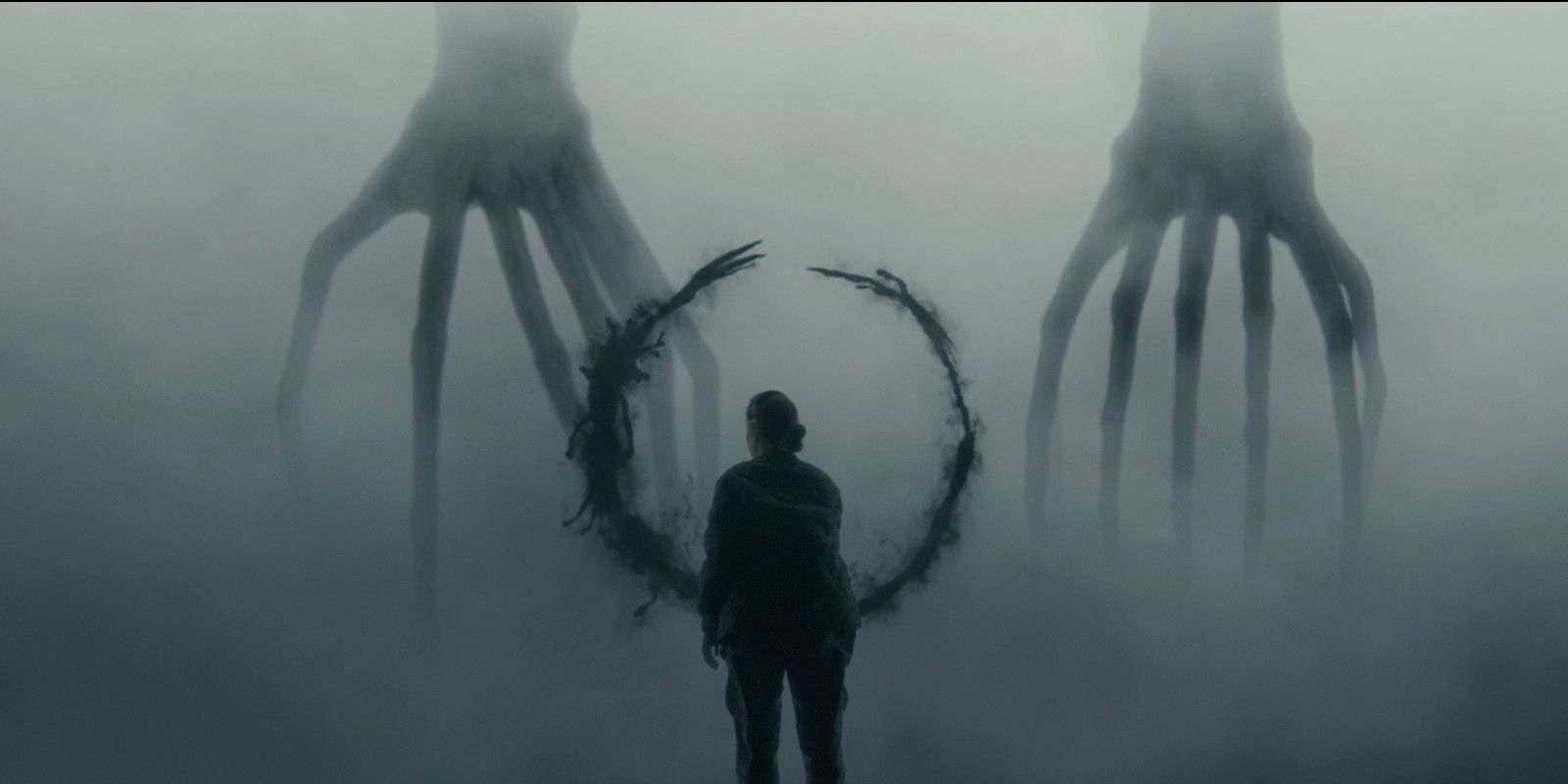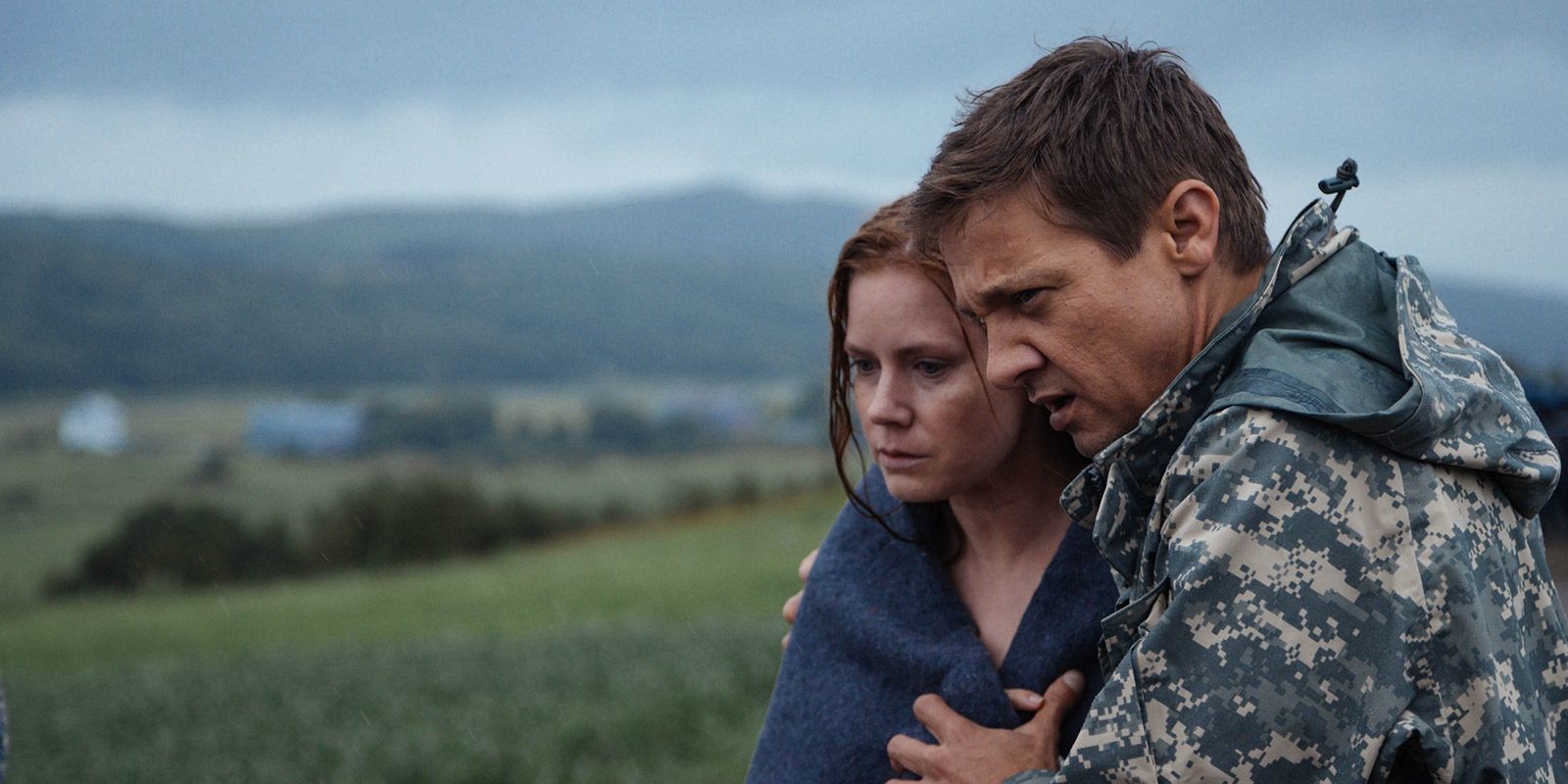Jeremy Renner reveals Denis Villeneuve's cerebral sci-fi hit Arrival actually contained minimal green screen, despite what some may think. These days, Villeneuve is earning much praise for his successful adaptation of Dune, but it was the 2016 film Arrival that first cemented him as a necessary auteur for the science fiction genre. Before that, he was best known for helming thrillers like Prisoners and Sicario. Upon its release, Arrival became a major player in that year's awards season, garnering a slew of technical nominations and a Best Director nom for Villeneuve at the Oscars.
Arrival stars Renner and Amy Adams as a physicist and a linguist, respectively, who are pulled into an intriguing extraterrestrial mystery. Unnervingly, alien spacecrafts have descended upon various parts of the Earth, hovering above the ground for an unknown purpose. Adams' Louise Banks is recruited to bridge the communication gap between humans and the aliens, while Renner's Ian Donnelly assists. Arrival tracks their development of a new language, which has surprising ripple effects for both Banks and Donnelly's lives.
Renner recently sat down with GQ to break down some of the biggest roles of his career. When he reached Arrival, Renner offered up an intriguing behind the scenes tidbit: Villeneuve didn't use much green screen for the movie. One might've assumed the scenes inside the craft were plastered with green screen in real life, but Renner said otherwise. He explained:
"That film doesn't really have a lot of green screen. 'Cause any time there was like a real big effect with the big alien pods, that was in the big giant fields, and they would just be able to place that because it's such a giant landscape, you know? There's no green screen that big. It was a huge, huge area. When it came to inside and climbing up, I mean, there was a whole set built for the whole walkup and stuff, so there's this whole set. So I didn't have to imagine too much. You know, the screen was like a big screen. We'd have to look at like X's. We're not seeing the actual aliens dance around. They did have actually puppeteers with long poles just to create movement for our eyeline that would move around if they're coming in or out of those foggy shadows, right?"
Those familiar with Villeneuve's work likely won't be surprised by this story. As was seen with Dune just this year, the director prioritizes practical effects and settings when possible. Dune ventured out into the Wadi Rum desert of Jordan to best capture the scope of what Arrakis would look like, and Arrival gave its actors a physical space for them to envision their meetings with the aliens. Green screen can come in handy for sci-fi movies, but sometimes it's the more realistic visuals that stand out the most. Plus, as Renner pointed out later, it helps the actors when they have real things they can act against. Having spent so many years in the MCU, Renner probably knows this better than anyone.
Arrival was just the beginning of Villeneuve's exploration of the sci-fi genre, as Blade Runner 2049 and Dune would later prove. He'll remain in this sandbox for a bit longer with Dune: Part 2, currently scheduled for release in October 2023. Where Villeneuve will go after that remains to be seen, though he has expressed interest in furthering the franchise with an adaptation of the third Dune book. Even without all these sequels, though, Villeneuve would be a vital sci-fi voice based on Arrival alone - and his practical approach to it is an excellent example of why that is.
Source: GQ


